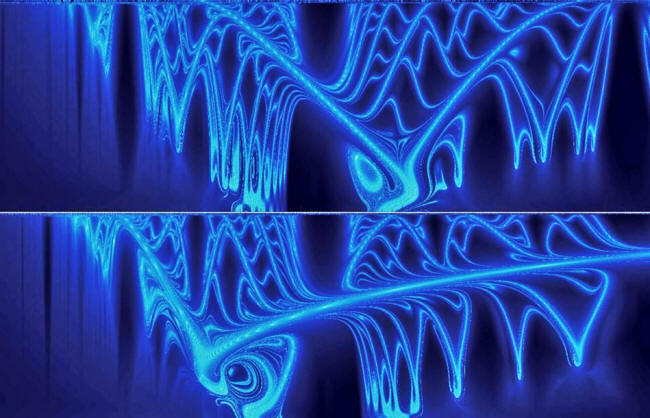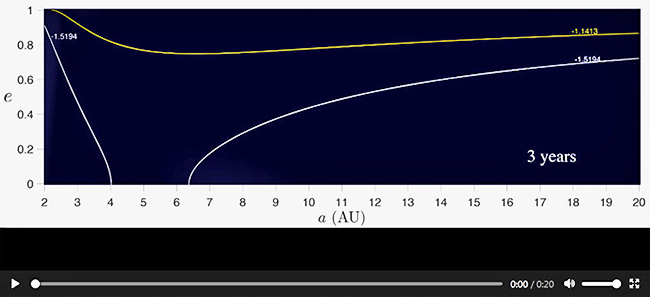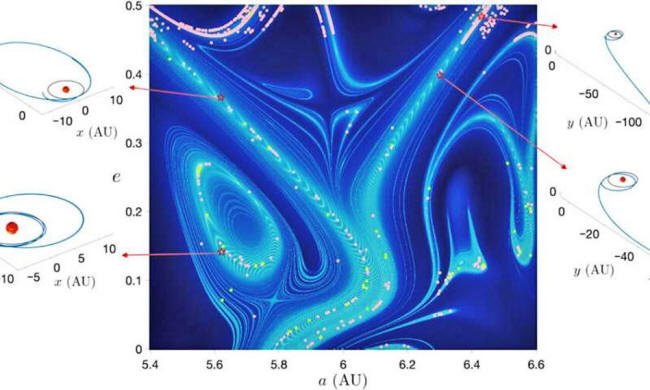|
by Paul Ratner
Arches of chaos in space manifolds.
Science Advances
using arches of chaos that can lead to
much faster
space travel. through the Solar System discovered
Don't get your engines
roaring along this "celestial autobahn" just yet, but the
researchers believe the new pathways can eventually be used by
spacecraft to get to the outer reaches of our Solar System with
relative haste.
Compare that to hundreds of thousands or even millions of years it might ordinarily take for space objects to traverse the Solar System.
For reference,
The international research team included Nataša Todorović, Di Wu, and Aaron Rosengren from the Belgrade Astronomical Observatory in Serbia, the University of Arizona, and UC San Diego.
Their new paper (The arches of chaos in the Solar System) proposes a dynamic route, going along connected series of arches within so-called space manifolds.
These structures, coming
into existence from gravitational effects between the Sun and the
planets, stretch from the asteroid belt to past Uranus.
They influence the comets around the gas giant as well as smaller space objects called "centaurs," with are like asteroids in size but exhibit the composition of comets.
Each
frame of the animation shows how the arches and substructures appear
over three-year increments.
Nataša Todorović, Di Wu and Aaron Rosengren Science Advances
A closer image of the
manifolds showing colliding and escaping objects.
The scientists figured out how these orbits were contained within known space manifolds. To detect the presences and structure of the space manifolds, the team employed the Fast Lyapunov Indicator (FLI), used to detect chaos.
The scientists ran
simulations to compute how the trajectories of particles approaching
different planets like Jupiter, Uranus and Neptune would be affected
by possible collisions and the manifolds.
Also unclear is how they
impact our planet's run-ins with asteroids and meteorites or any of
the man-made objects floating up in space near us.
|




